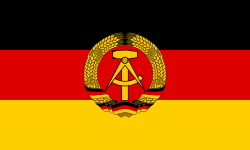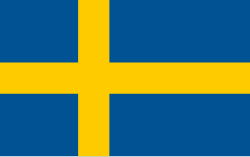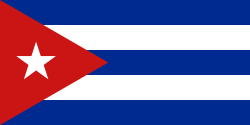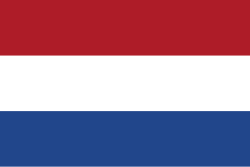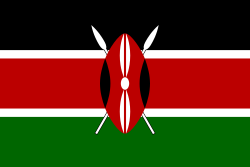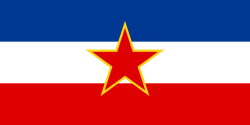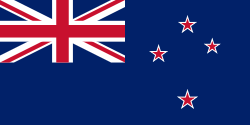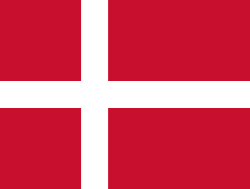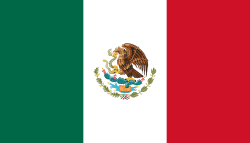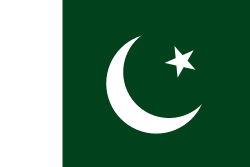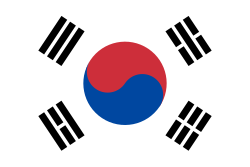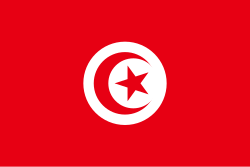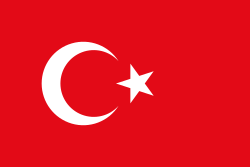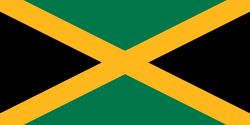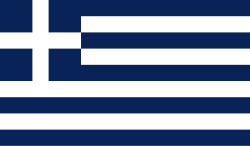Medaljfördelning vid olympiska sommarspelen 1972
För de olympiska spelen i München togs totalt 1 109 medaljer fram för de tre förstplacerade. Dessa fördelade sig på 364 guld-, 364 silver- och 381 bronsmedaljer. Medaljerna togs fram av Giuseppe Cassioli och Gerhard Marcks och tillverkades av Bayerisches Hauptmünzamt i München. Medan man mellan 1928 och 1968 hållit fast vid den italienska professorn Giuseppe Cassiolis utformning valde man att ge organisationskommittén i München möjlighet att själv utforma baksidan av medaljen. Gerhard Marcks valde att avbilda de antika halvbröderna Kastor och Polydeukes som grekerna såg som skyddshelgon för kamperna och vänskapen. På framsidan är segergudinnan som i sin vänstra hand håller en palm och i sin högra en krona. Man präglade medaljerna med inskriften XX. Olympiade München 1972. Medaljerna var fästa med kedjor. För första gången graverades idrottarens och sportens namn på medaljranden.
| Plac. | Land | Guld | Silver | Brons | Totalt antal medaljer |
|---|---|---|---|---|---|
| 1 | 50 | 27 | 22 | 99 | |
| 2 | 33 | 31 | 30 | 94 | |
| 3 | 20 | 23 | 23 | 66 | |
| 4 | 13 | 11 | 16 | 40 | |
| 5 | 13 | 8 | 8 | 29 | |
| 6 | 8 | 7 | 2 | 17 | |
| 7 | 7 | 5 | 9 | 21 | |
| 8 | 6 | 13 | 16 | 35 | |
| 9 | 6 | 10 | 5 | 21 | |
| 10 | 5 | 3 | 10 | 18 | |
| 11 | 4 | 6 | 6 | 16 | |
| 12 | 4 | 5 | 9 | 18 | |
| 13 | 3 | 6 | 7 | 16 | |
| 14 | 3 | 1 | 4 | 8 | |
| 14 | 3 | 1 | 4 | 8 | |
| 16 | 3 | 1 | 1 | 5 | |
| 17 | 2 | 4 | 7 | 13 | |
| 18 | 2 | 4 | 2 | 8 | |
| 19 | 2 | 3 | 4 | 9 | |
| 20 | 2 | 1 | 2 | 5 | |
| 21 | 2 | 1 | 1 | 4 | |
| 22 | 1 | 1 | 3 | 5 | |
| 23 | 1 | 1 | 1 | 3 | |
| 24 | 1 | 1 | 0 | 2 | |
| 25 | 1 | 0 | 0 | 1 | |
| 26 | 0 | 3 | 0 | 3 | |
| 27 | 0 | 2 | 3 | 5 | |
| 28 | 0 | 2 | 1 | 3 | |
| 29 | 0 | 2 | 0 | 2 | |
| 29 | 0 | 2 | 0 | 2 | |
| 31 | 0 | 1 | 2 | 3 | |
| 31 | 0 | 1 | 2 | 3 | |
| 33 | 0 | 1 | 0 | 1 | |
| 33 | 0 | 1 | 0 | 1 | |
| 33 | 0 | 1 | 0 | 1 | |
| 33 | 0 | 1 | 0 | 1 | |
| 33 | 0 | 1 | 0 | 1 | |
| 33 | 0 | 1 | 0 | 1 | |
| 33 | 0 | 1 | 0 | 1 | |
| 33 | 0 | 1 | 0 | 1 | |
| 33 | 0 | 1 | 0 | 1 | |
| 42 | 0 | 0 | 2 | 2 | |
| 42 | 0 | 0 | 2 | 2 | |
| 44 | 0 | 0 | 1 | 1 | |
| 44 | 0 | 0 | 1 | 1 | |
| 44 | 0 | 0 | 1 | 1 | |
| 44 | 0 | 0 | 1 | 1 | |
| 44 | 0 | 0 | 1 | 1 |
Källor
- ”OLYMPIC GAMES Munich 1972 - Medal Table” (på engelska). Internationella olympiska kommittén. http://www.olympic.org/uk/games/past/table_uk.asp?OLGT=1&OLGY=1972. Läst 21 mars 2009.
Se även
| |||||||||||
Media som används på denna webbplats
Government Ensign of Hungary, flown by state-owned, non-military vessels from 1957 to 1990.
Författare/Upphovsman: Scroch, Licens: CC BY-SA 3.0
Flag of Bulgaria (1971-1990). Flag of Bulgaria with Bulgarian coat from 1971.
Författare/Upphovsman: Scroch, Licens: CC BY-SA 3.0
Flag of Bulgaria (1971-1990). Flag of Bulgaria with Bulgarian coat from 1971.
Flag of Romania, (21 August 1965 - 22 December 1989/officialy 27 December 1989).

Construction sheet of the Flag of Romania as depicted in Decree nr. 972 from 5 November 1968.
- l = 2/3 × L
- C = 1/3 × L
- S = 2/5 × l
Flag of Romania, (21 August 1965 - 22 December 1989/officialy 27 December 1989).

Construction sheet of the Flag of Romania as depicted in Decree nr. 972 from 5 November 1968.
- l = 2/3 × L
- C = 1/3 × L
- S = 2/5 × l
Flag of the Socialist Federal Republic of Yugoslavia (1946-1992).
The design (blazon) is defined in Article 4 of the Constitution for the Republic of Yugoslavia (1946). [1]
Flag of the Socialist Federal Republic of Yugoslavia (1946-1992).
The design (blazon) is defined in Article 4 of the Constitution for the Republic of Yugoslavia (1946). [1]
Författare/Upphovsman: Gutten på Hemsen, Licens: CC0
Flag of Norway with colors from the previous version on Commons. This file is used to discuss the colors of the Norwegian flag.
The civil ensign and flag of Belgium. It is identical to Image:Flag of Belgium.svg except that it has a 2:3 ratio, instead of 13:15.
The flag of Brazil from 1968 to 1992 with 23 stars.
Flag of Jamaica. “The sunshine, the land is green, and the people are strong and bold” is the symbolism of the colours of the flag. GOLD represents the natural wealth and beauty of sunlight; GREEN represents hope and agricultural resources; BLACK represents the strength and creativity of the people. The original symbolism, however, was "Hardships there are, but the land is green, and the sun shineth", where BLACK represented the hardships being faced.
Författare/Upphovsman: SanchoPanzaXXI, Licens: CC BY-SA 4.0
Flag of Spain during the Spanish State. It was adopted on 11 October 1945 with Reglamento de Banderas Insignias y Distintivos (Flags, Ensigns and Coats of Arms Bill)
Olympic Rings without "rims" (gaps between the rings), As used, eg. in the logos of the 2008 and 2016 Olympics. The colour scheme applied here was specified in 2023 guidelines.
Olympic Rings without "rims" (gaps between the rings), As used, eg. in the logos of the 2008 and 2016 Olympics. The colour scheme applied here was specified in 2023 guidelines.
The flag of the Ethiopian Empire with the Lion of Judah in the center
Flag of Greece (1970–1975), adopted by the Greek military Junta; Aspect ratio: 7:12





